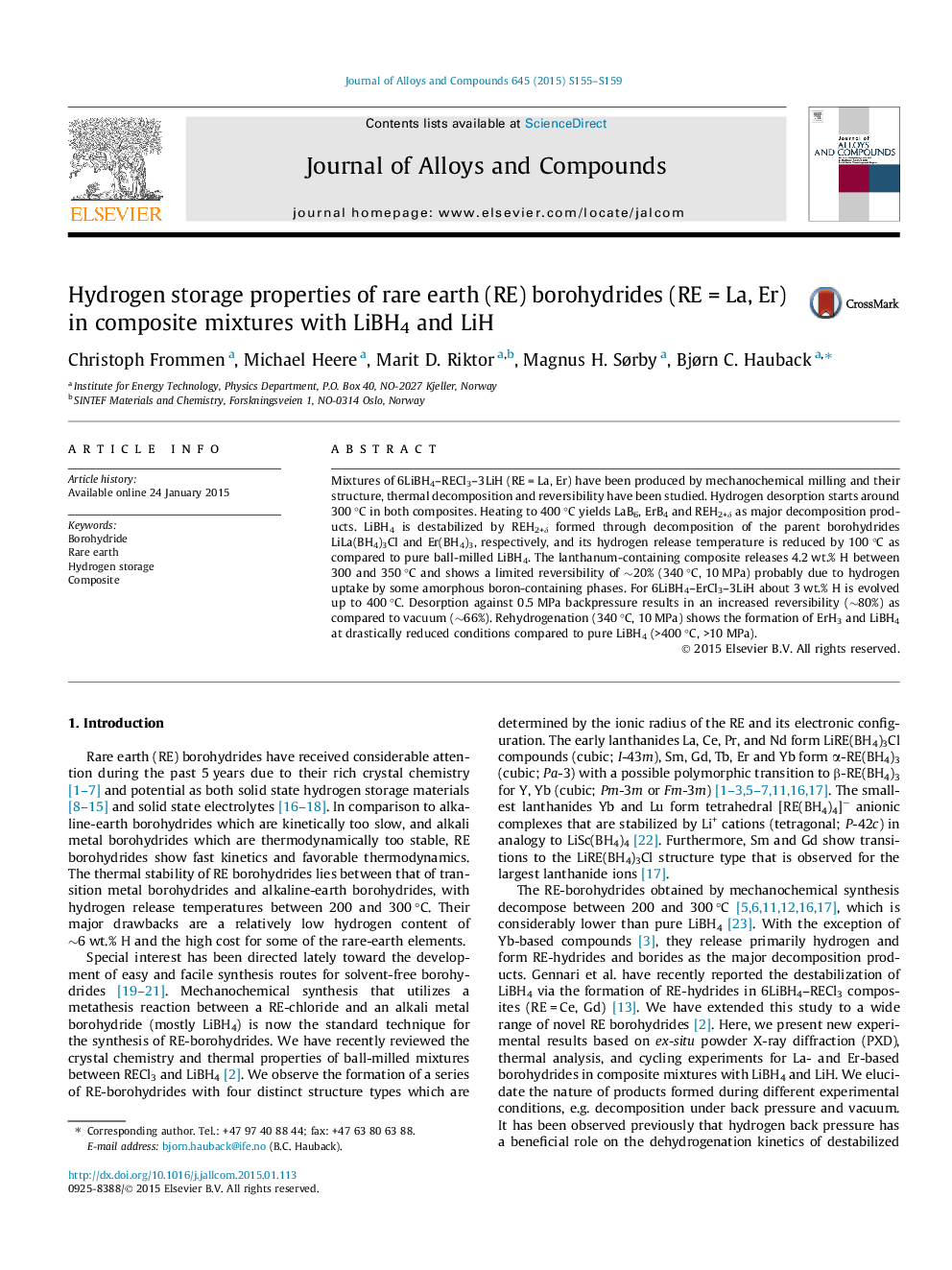| Article ID | Journal | Published Year | Pages | File Type |
|---|---|---|---|---|
| 1608737 | Journal of Alloys and Compounds | 2015 | 5 Pages |
•6LiBH4–RECl3–3LiH composites (RE = La, Er) studied for the first time.•Drastically reduced decomposition temperature (300 oC) compared to LiBH4 (>400 °C).•Partial reversibility for 6LiBH4–LaCl3–3LiH: (19% at 340 °C, 10 MPa).•Excellent reversibility for 6LiBH4–ErCl3–3LiH: (80% at 340 °C, 10 MPa).•Reversibility comparable to that obtained for pure LiBH4 (76% at 600 °C and 15.5 MPa).
Mixtures of 6LiBH4–RECl3–3LiH (RE = La, Er) have been produced by mechanochemical milling and their structure, thermal decomposition and reversibility have been studied. Hydrogen desorption starts around 300 °C in both composites. Heating to 400 °C yields LaB6, ErB4 and REH2+δ as major decomposition products. LiBH4 is destabilized by REH2+δ formed through decomposition of the parent borohydrides LiLa(BH4)3Cl and Er(BH4)3, respectively, and its hydrogen release temperature is reduced by 100 °C as compared to pure ball-milled LiBH4. The lanthanum-containing composite releases 4.2 wt.% H between 300 and 350 °C and shows a limited reversibility of ∼20% (340 °C, 10 MPa) probably due to hydrogen uptake by some amorphous boron-containing phases. For 6LiBH4–ErCl3–3LiH about 3 wt.% H is evolved up to 400 °C. Desorption against 0.5 MPa backpressure results in an increased reversibility (∼80%) as compared to vacuum (∼66%). Rehydrogenation (340 °C, 10 MPa) shows the formation of ErH3 and LiBH4 at drastically reduced conditions compared to pure LiBH4 (>400 °C, >10 MPa).
